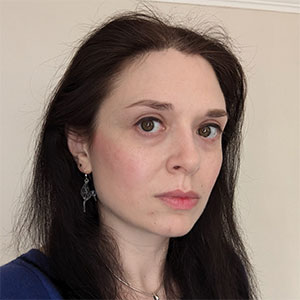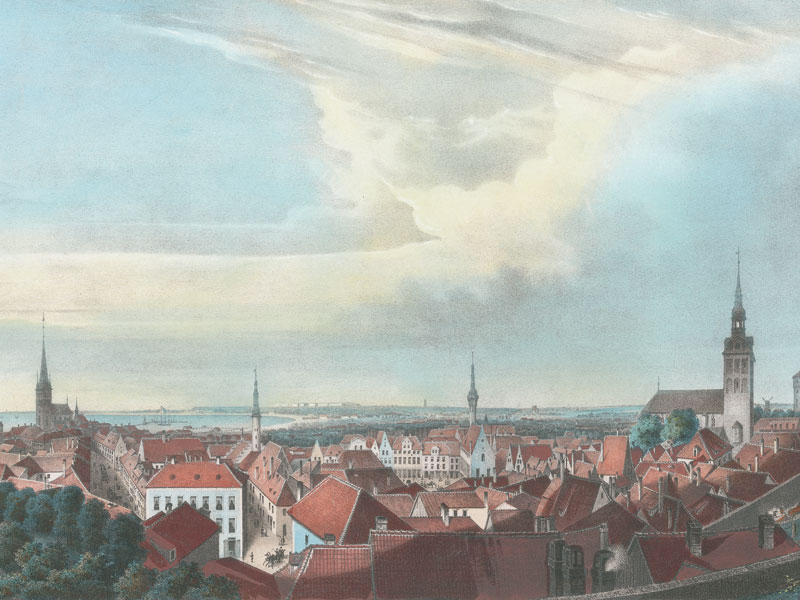Overview
Estonia, Latvia, Lithuania: the regaining of independence in 1991 by these three countries was a happy outcome of the demise of the Soviet Union. While their development since its collapse went underappreciated for years, Russia’s invasion of Ukraine in 2022 thrust the Baltic nations into the spotlight.
Though geographical proximity leads these countries to be conventionally thought of together as a single entity, the degree of difference between them is surprisingly great in terms of modernity, ethnicity, language, historical development and religion.
The progressive Estonians are of Finno-Ugric origin and their language has nothing in common with their Latvian or Russian neighbours. Lithuanian history has for much of the post-medieval era been linked with Catholic Poland, whereas Estonia and Latvia were early recipients of Protestantism. Paganism, Russian Orthodoxy and Judaism have also played vital roles in the development of the cultures of the Baltic countries.
Having variously been under Germanic, Polish and Swedish dominion, in the eighteenth century these states succumbed to the bear hug of the Russian Empire - and only after the First World War did they achieve full independence. In 1940, with the Soviet Union’s violent annexation, they once more fell under Russian rule. Between 1941–44 they had the additional suffering of the Nazi Occupation. Yet the Baltic States were always among the most prosperous and liberal of the Soviet republics, and among the most independent-minded.
The remarkable architecture of the Estonian, Latvian and Lithuanian cities and countryside contains an intriguing wealth of stylistic variety from the Gothic to the Baroque, vernacular to urban eclectic, neo-classical to Art Nouveau, and neo-Byzantine to modernist. Their arts and architecture reveal intimate connections with central, east, west and nordic Europe and at the same time a very special local specificity.
Surprise ranks high among the responses of the visitor now – surprise that there is so much of interest and beauty. Surprise that the Iron Curtain was indeed so opaque a veil that it was possible for so long to remain largely ignorant of these countries and their heritage. And surprise that since the last Soviet occupation forces left, these countries have blossomed into such exciting and innovative places.
Day 1
Tallinn (Estonia). Fly in the morning from London Heathrow to Tallinn via Frankfurt (Lufthansa). First of three nights in Tallinn.
Day 2
Tallinn (Estonia). Upper Tallinn has a striking situation on a steep-sided hill overlooking the Baltic Sea, and a fine set of historic buildings. These include the Gothic cathedral, 15th-century town hall and Toompea Palace (Parliament). Within the medieval walls of the Lower Town there is some highly picturesque streetscape with gabled houses and churches. Overnight Tallinn.
Day 3
Lahemaa National Park (Estonia). Drive east into an area now designated as a national park. The charming manor houses of Palmse and Sagadi have full 18th-century classical dress disguising the timber structure, and are fully furnished. Lunch is at an inn, with wooden buildings – a former postal service station on the road to St Petersburg.
Day 4
Tartu (Estonia). Drive through a gently undulating mix of woodland and fertile fields, with traditional vernacular farmsteads. Tartu is in some ways the cultural capital of Estonia, the university having been founded in 1632. There are fine 18th- and 19th-century buildings, especially the town hall and university, and there is a visit to the restored Jaani church. First of two nights in Tartu.
Day 5
Lake Peipsi (Estonia). Drive to the shores of Lake Peipsi and visit Alatskivi, Raja, and Kolkja, all villages which provided refuge for the Old Believers, persecuted for their disaffection with the Orthodox Church. Overnight Tartu.
Day 6
Cēsis (Latvia). Drive from Estonia to Latvia through hilly landscape renowned for its beauty. Cēsis is a well-preserved medieval town and former stronghold of the Livonian Order. Visit the impressive ruined castle, one of the key political, administrative and economic centres of the Teutonic Order. Destroyed in 1577, it was rebuilt following the Livonian War. Thirteenth-century St John’s Parish Church is the largest medieval basilica outside the capital. First of three nights in Riga.
Day 7
Riga (Latvia). Within the extensive Old Town there are medieval streets, Hanseatic warehouses, Gothic and Baroque churches and 19th-century civic buildings. Beyond the walls is a residential quarter laid out at the end of the 19th century with grand boulevards and classical, historicist and Art Nouveau façades. Afternoon visits to the Gothic church of St Peter with its distinctive tall spire, and to Mentzendorff House, formally a restored merchant’s house, now a museum devoted to life in Riga in the 18th and 19th centuries.
Day 8
Riga (Latvia). A visit to the fascinating outdoor ethnographic museum celebrates the wide-ranging Latvian traditions in applied arts with vernacular housing from Latvia’s four provinces. Free afternoon in Riga; possibilities include an excursion to the Salaspils Memorial, a collection of brutalist statues commemorating the victims of the Nazi occupation. Within Riga there is the Museum of the History of Riga and Navigation, established in 1773, and Riga Bourse Art Museum, a collection of paintings, porcelain and silver collections.
Day 9
Rundāle (Latvia), Kaunas (Lithuania). Rundāle was one of the most splendid palaces in the Russian Empire, built from 1736 by the architect Rastrelli for a favourite of Empress Anna. Lunch is in the palace restaurant. Lithuania is entered via the town of Bauska and there is a stop in Kėdainiai to visit the regional museum. First of two nights in Kaunas.
Day 10
Kaunas (Lithuania). A historically diverse town with a wealth of architecture. Near the central square are a number of churches and the Town Museum. The Čiurlionis Art Museum has works of Lithuania’s most famous composer and artist. Other afternoon visits include the Resurrection Church and the neo-Baroque Synagogue.
Day 11
Pažaislis, Vilnius (Lithuania). At Pažaislis is a magnificent Baroque nunnery and pilgrimage church, one of the architectural gems of Eastern Europe. Continue to Vilnius which, far from the sea, has the feel of a Central European metropolis, with Baroque the predominant style. Afternoon walk to the bishop’s palace (now the Presidential Palace), the university and the Church of St John. First of three nights in Vilnius.
Day 12
Vilnius. Walk to the ‘Gates of Dawn’ (sole surviving gate in the 16th-century defensive wall), the Carmelite church of St Theresa, the former Jewish ghetto, the cathedral and the exquisite little Late-Gothic church of St Anne. Visit the church of Saints Peter and Paul with outstanding stucco sculptural decoration, and the newly restored Grand Dukes’ Palace.
Day 13
Vilnius. Visit the Church Heritage Museum and the Kazys Varnelis House Museum, an eclectic private collection of art and map. In the afternoon there is some free time; suggestions include the Vytautas Kasiulis Museum, or the Theatre and Music Museum.
Day 14
Vilnius. Drive to Vilnius airport and fly from Vilnius to London Heathrow via Frankfurt, arriving in the late afternoon.

Aliide Naylor
Journalist, author and editor with a focus on the Baltic states and their neighbours. Her writing has appeared in The Times, New Statesman and The Guardian. Aliide has family in Estonia and she has also lived in St Petersburg and Moscow, where she served as Arts Editor at The Moscow Times. Her book The Shadow in the East: Vladimir Putin and the New Baltic Front (I.B. Tauris, 2020) explores the Baltics in the 21st century and their relationship with modern Russia.
Price, per person
Price, per person. Two sharing: £4,990 or £4,640 without flights. Single occupancy: £5,520 or £5,170 without flights.
Included
Air travel (economy class) on Lufthansa flights (Airbus 320); travel by private coach throughout; accommodation as described below; breakfasts, 5 lunches and 8 dinners with wine; all admission to museums and sites visited with the group; all gratuities for restaurant staff, drivers, guides; all airport and state taxes; the services of the lecturer and tour manager.
Accommodation
Hotel Palace, Tallinn: comfortable 4-star hotel on the edge of the old town, reopened after a smart refurbishment. Lydia Hotel, Tartu: modern, centrally located 4-star hotel with a good restaurant; decor is quite bright. Grand Poet Hotel, Riga: 5-star hotel though more akin to a 4-star, well-located with modern decor. Hotel Daugirdas, Kaunas: 19th-century mansion with modern features. Hotel Neringa, Vilnius: plain but comfortable 4-star hotel in a good location on the edge of the old town.
How strenuous?
This is a long tour with four hotel changes and some long coach journeys. There is a lot of walking, some of it on cobbled or roughly paved ground. Average distance by coach per day: 56 miles.
Are you fit enough to join the tour?
Group size
Between 10 and 22 participants.
Travel advice
Before booking, please refer to the FCDO website to ensure you are happy with the travel advice for the destination(s) you are visiting.
Combine with
In 2024:
King Ludwig II, 4–9 August
Maritime England, 27 August–2 September
The Schubertiade, 27 August–2 September
The Sibelius Festival, 28 August–1 September
The Hanseatic League, 29 August–5 September

'The itinerary was carefully chosen e.g. appropriate day of the week for particular town or venue.'
'Very thoughtfully assembled. Overall we felt we had gained very full overviews of all 3 countries.'
'A superb lecturer with encyclopaedic knowledge of all three countries. Insightful and accessibly informative.'
